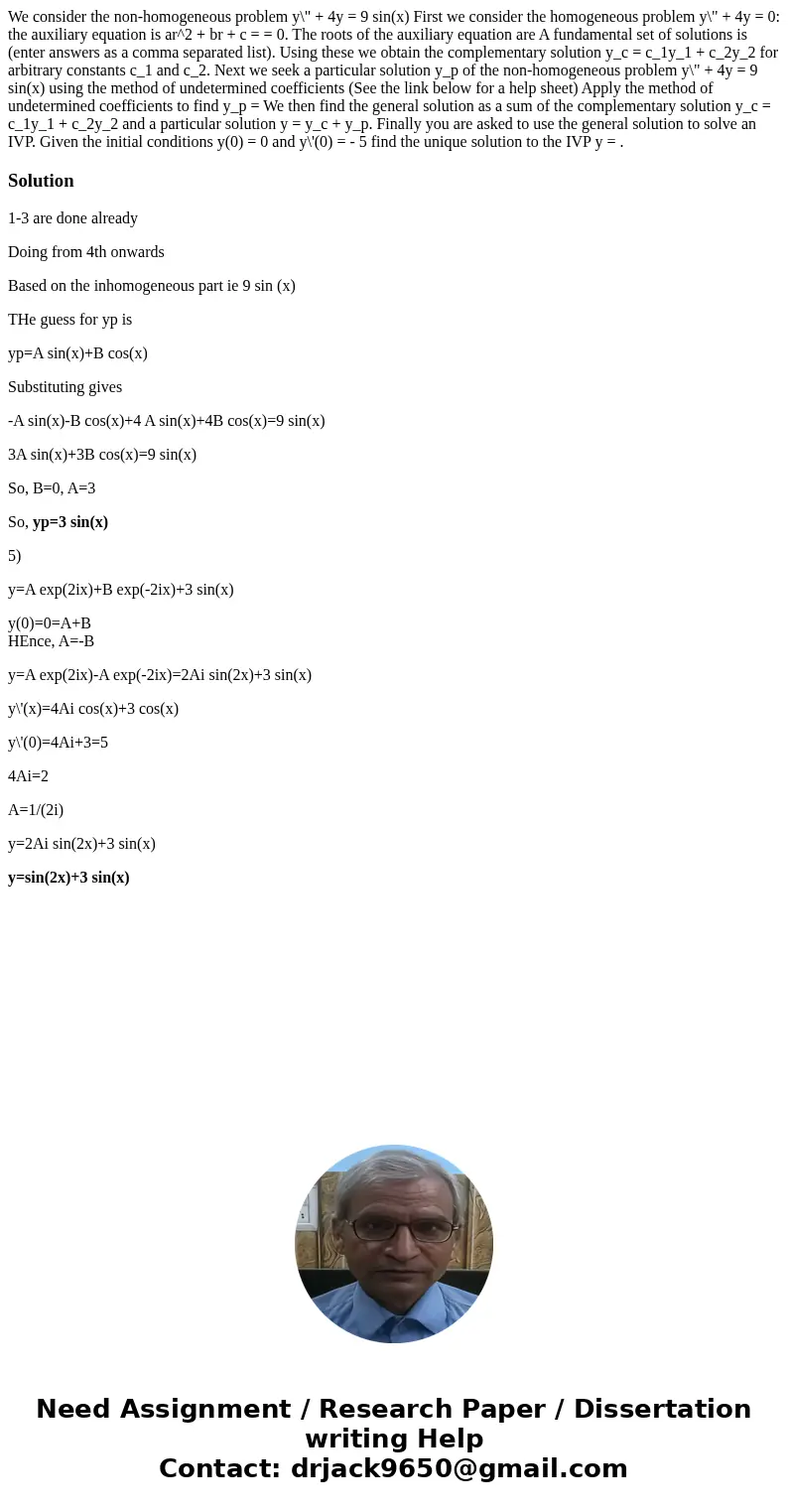We consider the nonhomogeneous problem y 4y 9 sinx First w
We consider the non-homogeneous problem y\" + 4y = 9 sin(x) First we consider the homogeneous problem y\" + 4y = 0: the auxiliary equation is ar^2 + br + c = = 0. The roots of the auxiliary equation are A fundamental set of solutions is (enter answers as a comma separated list). Using these we obtain the complementary solution y_c = c_1y_1 + c_2y_2 for arbitrary constants c_1 and c_2. Next we seek a particular solution y_p of the non-homogeneous problem y\" + 4y = 9 sin(x) using the method of undetermined coefficients (See the link below for a help sheet) Apply the method of undetermined coefficients to find y_p = We then find the general solution as a sum of the complementary solution y_c = c_1y_1 + c_2y_2 and a particular solution y = y_c + y_p. Finally you are asked to use the general solution to solve an IVP. Given the initial conditions y(0) = 0 and y\'(0) = - 5 find the unique solution to the IVP y = .
Solution
1-3 are done already
Doing from 4th onwards
Based on the inhomogeneous part ie 9 sin (x)
THe guess for yp is
yp=A sin(x)+B cos(x)
Substituting gives
-A sin(x)-B cos(x)+4 A sin(x)+4B cos(x)=9 sin(x)
3A sin(x)+3B cos(x)=9 sin(x)
So, B=0, A=3
So, yp=3 sin(x)
5)
y=A exp(2ix)+B exp(-2ix)+3 sin(x)
y(0)=0=A+B
HEnce, A=-B
y=A exp(2ix)-A exp(-2ix)=2Ai sin(2x)+3 sin(x)
y\'(x)=4Ai cos(x)+3 cos(x)
y\'(0)=4Ai+3=5
4Ai=2
A=1/(2i)
y=2Ai sin(2x)+3 sin(x)
y=sin(2x)+3 sin(x)

 Homework Sourse
Homework Sourse